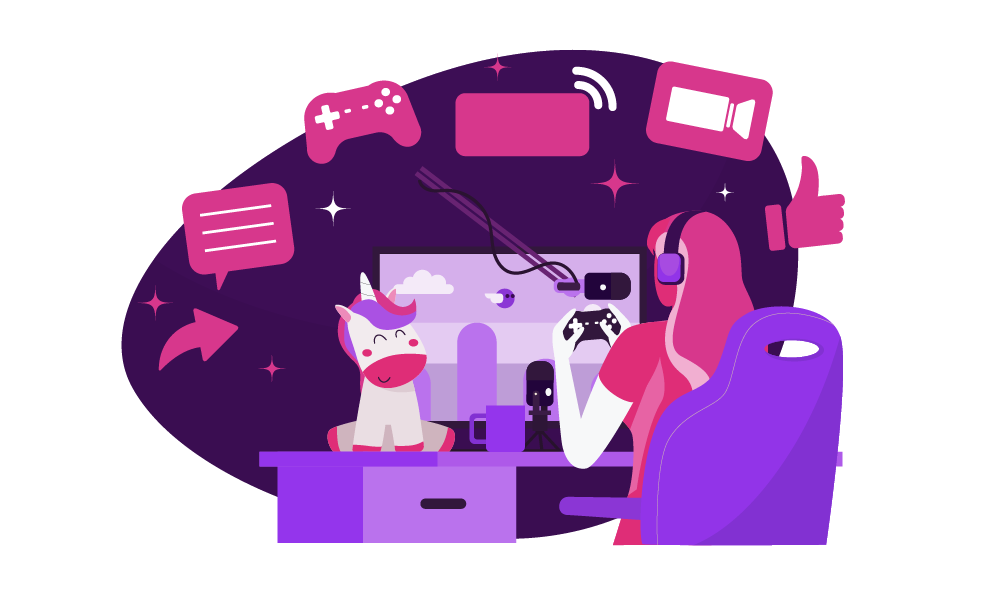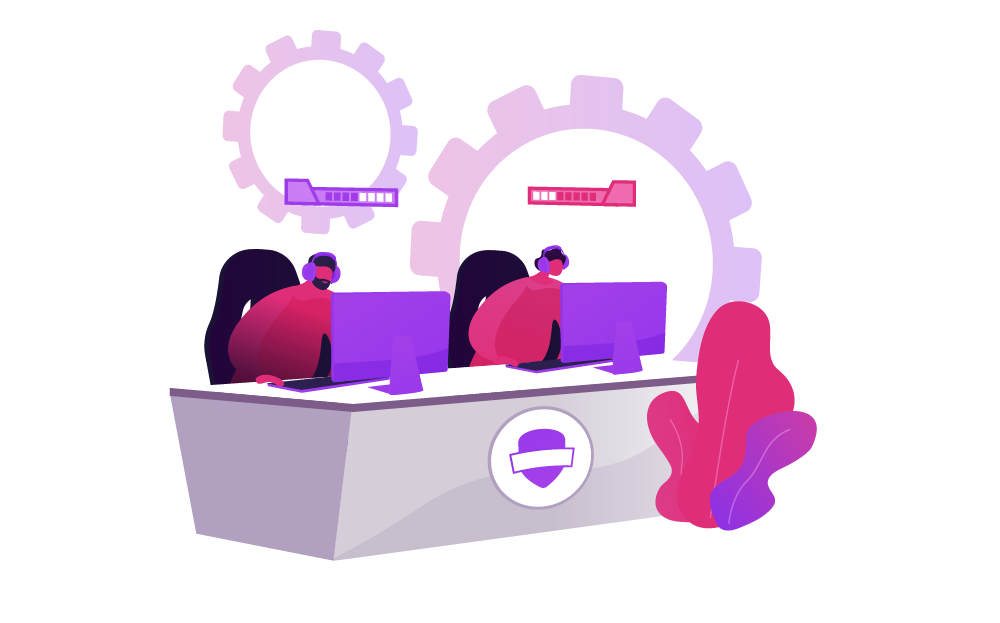Game Development Cost: An In-depth Analysis (With Case Studies)
When diving into the world of video games, it's easy to get lost in the immersive stories, stunning graphics, and captivating gameplay. But behind every successful game lies a significant investment of time, effort, and money. So, if you've ever wondered, "How much does it cost to make a game?" you're not alone. In this comprehensive guide, we'll explore the intricacies of game development costs, breaking down the factors that influence them and offering real-world examples to illustrate our points.
What is Game Development?
Before we delve into the cost aspects, let's clarify what game development entails. Game development is the process of creating video games from concept to final product. It encompasses various disciplines, including game design, programming, art and animation, sound design, quality assurance, and project management. Game development can range from small indie projects created by a handful of developers to massive AAA titles produced by large teams over several years.
Now, let's explore the factors that affect the cost of game development.

What Factors Affect the Cost of Game Development?
Game development costs can vary significantly depending on a multitude of factors. To provide a clearer picture, we'll break down these factors into specific categories:
Complexity of the Game:
The complexity of a game is one of the most critical factors influencing its development cost. Complexity encompasses various aspects, such as the game's design, mechanics, and overall scope. Here, we can draw a real-world example to highlight the impact of complexity on cost:
Case Study: "Minecraft" vs. "The Witcher 3: Wild Hunt"
"Minecraft," a sandbox game created by Markus Persson, started as a simple indie project. Its development cost was relatively low, primarily consisting of Persson's time and minimal resources. In contrast, "The Witcher 3: Wild Hunt," developed by CD Projekt Red, is a sprawling open-world RPG with intricate storylines, high-quality graphics, and complex gameplay mechanics. The development cost for "The Witcher 3" reportedly exceeded $80 million. The vast difference in complexity between these two games directly correlates with their development costs.
Platform:
The choice of platform(s) for which a game is developed can significantly impact the cost. Different platforms have varying technical requirements and user expectations, leading to differences in development efforts and expenses.
Case Study: "Candy Crush Saga" on Mobile vs. "Red Dead Redemption 2" on Console
"Candy Crush Saga" is a mobile puzzle game developed by King. It's optimized for touchscreen devices and has relatively modest technical demands. Its development cost, while still substantial, was significantly lower than that of a complex console game like "Red Dead Redemption 2," which required high-end graphics, advanced AI, and a vast open world. The latter had a development cost estimated at over $100 million.
Team Size:
The number of people working on a game can significantly affect the development cost. More team members mean higher salaries, project management costs, and increased resource management needs.
Case Study: "Undertale" vs. "Grand Theft Auto V"
"Undertale," an indie RPG developed primarily by Toby Fox, was created with a small team and a limited budget. The game's development cost was relatively modest, estimated at around $50,000. On the other hand, "Grand Theft Auto V" required a massive team of hundreds of developers, designers, and artists over several years. The game's development budget surpassed $270 million, making it one of the most expensive games ever created.
Technology:
The use of advanced technology and tools can increase the cost of development. Cutting-edge graphics engines, physics simulations, and virtual reality integration all require specialized skills and resources.
Case Study: "Fortnite" vs. "Half-Life: Alyx"
"Fortnite," developed by Epic Games, utilizes the Unreal Engine, a powerful and versatile game engine that streamlines development. While "Fortnite" has undoubtedly incurred significant expenses due to its live service model and frequent updates, it benefited from the efficiency of the engine. In contrast, "Half-Life: Alyx," a virtual reality game developed by Valve, required extensive research and development to create a groundbreaking VR experience. The cost of developing "Half-Life: Alyx" was estimated at around $40 million.
Art and Assets:
High-quality graphics, sound effects, music, and other assets contribute to a game's overall production value. These assets can be expensive to create in-house or license from third-party providers.
Case Study: "Limbo" vs. "Final Fantasy XV"
"Limbo," an indie puzzle-platformer by Playdead, features minimalist black-and-white visuals and a haunting soundtrack. Its development cost was relatively low due to its simple art style. In contrast, "Final Fantasy XV" boasts breathtakingly detailed environments, orchestral music, and lifelike character models. The production of these assets significantly contributed to the game's reported development cost of over $100 million.
Localization:
Translating a game into multiple languages and adapting it for different regions can increase development costs. Localization involves not only translating text but also ensuring cultural sensitivity and compliance with local regulations.
Case Study: "The Legend of Zelda: Breath of the Wild"
Nintendo's "The Legend of Zelda: Breath of the Wild" achieved global success, partly due to its thorough localization efforts. The game was translated into numerous languages, and cultural nuances were carefully considered to make it accessible and enjoyable for players worldwide. Such extensive localization efforts can substantially add to a game's overall development cost.
Marketing and Distribution:
Promoting and distributing a game are essential steps in its success, but they also come with costs. Marketing campaigns, advertising, public relations, and distribution platforms all require financial investment.
Case Study: "Cyberpunk 2077"
CD Projekt Red's "Cyberpunk 2077" garnered significant attention leading up to its release, with extensive marketing efforts and a highly anticipated launch. However, the game's troubled release highlighted the potential risks of excessive marketing spending. While the game itself had a substantial development budget, the total cost, including marketing, is estimated to have exceeded $300 million.

How Can I Estimate the Cost of Developing My Game Idea?
Now that we've explored the various factors that influence game development costs, you may be wondering how to estimate the cost of developing your game idea. Here are some steps to help you get started:
Define Your Game's Concept:
Begin with a thorough exploration of your game idea. Define its core concept, gameplay mechanics, and narrative elements. Consider the following questions:
- What is the primary gameplay mechanic or hook that sets your game apart?
- What is the game's genre, and how does it fit into the market?
- Are there unique selling points or innovative features that will attract players?
- A well-defined concept serves as the foundation for all budgeting decisions.
Determine the Complexity:
Assess the complexity of your game by breaking it down into its various components. Consider the following aspects:
- Gameplay Complexity: Is your game a simple puzzle or a complex strategy game?
- Narrative Depth: How intricate is the game's story, and how much branching or non-linear storytelling is involved?
- Game World: Is your game set in a small, contained environment or a sprawling open world?
- Number of Features: List all the gameplay features and mechanics you plan to include.
Understanding the complexity of your game will help you estimate the time and resources needed for development accurately.
Choose Your Platform(s):
Decide on the platforms you intend to release your game on. Consider the following platforms and their implications:
- PC: Development for PC offers flexibility but may require optimization for various hardware configurations.
- Console: Console development provides a fixed platform but often involves certification processes and licensing fees.
- Mobile: Mobile games have a vast market, but they require adaptation to touch controls and various screen sizes.
- VR/AR: Developing for virtual or augmented reality can be exciting but comes with specific technical challenges and niche audiences.
Each platform choice has unique development considerations and potential costs.
Build a Team:
Determine the size and composition of your development team based on your game's complexity and platform requirements. Consider the following roles:
- Programmers: Responsible for coding gameplay, mechanics, and technical systems.
- Artists: Create visual assets, including character models, environments, and animations.
- Designers: Craft gameplay systems, level layouts, and user interfaces.
- Sound Engineers: Produce music and sound effects.
- Project Managers: Oversee the development process, scheduling, and resource management.
Estimate the number of team members needed for each role and their corresponding salaries, taking into account experience levels and location.
Technology and Tools:
Evaluate the technology stack and tools you'll use for development. Consider the following factors:
- Game Engine: Decide whether to use an existing game engine like Unity, Unreal Engine, or a custom engine. Licensing fees may apply.
- Development Software: List the software tools required for asset creation, coding, and project management.
- Hardware: Determine the hardware requirements for development, including computers, VR headsets, or specialized equipment.
Asset Creation:
Estimate the cost of creating or licensing assets essential for your game's visual and auditory appeal:
- Graphics: Calculate expenses for 2D and 3D art assets, including character models, animations, textures, and environment design.
- Audio: Include costs for music composition, sound effects, voiceovers, and audio editing.
- Licensing: If you plan to use third-party assets, account for licensing fees and royalties.
Localization:
If you intend to target international markets, consider the cost of localization, which involves translating the game's text and adapting content for different regions. Include expenses for professional translators and cultural consultants.
Marketing and Distribution:
Develop a marketing strategy tailored to your target audience and game genre. Consider these factors:
- Advertising: Budget for online ads, social media promotions, and influencer marketing campaigns.
- Public Relations: Include expenses for press releases, interviews, and events.
- Distribution Fees: Account for platform fees and revenue-sharing agreements if you're publishing on platforms like Steam, the App Store, or consoles.
Create a Detailed Budget:
Based on your assessments, create a detailed budget that accounts for all the expenses mentioned above. Be realistic and include contingencies for unexpected costs.
If you're uncertain about any aspect of budgeting or development, don't hesitate to seek advice from experienced developers or industry experts.
Whether you need help from one of our experienced service consultants or assistance with budget planning, VNEXT Global has got you covered.

How Much Does It Cost to Make a Game?
The cost of making a game can vary widely, as demonstrated by the real-world examples and factors discussed above. Here's a summary of the typical cost ranges for different types of games:
- Small Indie Games: Simple mobile games or indie projects can have budgets ranging from $10,000 to $500,000, depending on complexity and scope.
- Mid-sized Games: Games for PC or console with moderate complexity can range from $1 million to $10 million or more.
- AAA Titles: Large-scale AAA games can have budgets that exceed $100 million, with some reaching $300 million or more, including marketing expenses.
It's important to note that these are general estimates, and individual projects may fall outside these ranges. Additionally, factors such as location, the experience of the development team, and market conditions can further influence costs.

Are there any ways to reduce game development costs without sacrificing quality?
Yes, there are several ways to reduce game development costs without sacrificing quality. Here are a few suggestions:
Choose the right game engine:
There are several game engines available in the market, both free and paid. Choosing the right game engine can significantly reduce development costs.
Outsource functions:
Outsourcing functions that your company's resources can't handle, such as game testing or development, can be a smart move. By simply planning your ideas and working with outsourcing vendors, you can enjoy the benefits of cost-cutting without sacrificing quality. Let the experts handle the rest while you focus on growing your business.
Use agile development methodologies:
Agile development methodologies such as Scrum and Kanban can help reduce development costs by improving efficiency and reducing waste.
Focus on core features:
Prioritize the development of core features that are essential to the game's success. This will help reduce development time and costs while ensuring that the game meets the player's needs.
By implementing these strategies, developers can reduce game development costs without sacrificing quality.

Final Thoughts:
The cost of game development is a multifaceted issue influenced by various factors, including the game's complexity, platform, team size, technology, art and assets, localization, and marketing efforts. To estimate the cost of developing your game idea, carefully consider these factors, create a detailed budget, and seek expert advice if needed. Game development is undoubtedly a challenging endeavor, but with careful planning and budgeting, you can turn your creative vision into a reality.
If you are looking for a trusted IT partner, VNEXT Global is the ideal choice. With 14+ years of experience, we surely can help you to optimize your business digitalization within a small budget and short time. Currently, we have 400+ IT consultants and developers in Mobile App, Web App, System Development, Blockchain Development and Testing Services. We have provided solutions to 600+ projects in several industries for clients worldwide. We are willing to become a companion on your way to success. Please tell us when is convenient for you to have an online meeting to discuss this further. Have a nice day!












